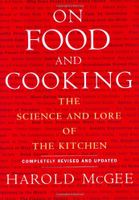Advertisement
Starter Bacteria
By Harold McGee
Published 2004
First there are the lactic acid bacteria that initially acidify the milk, persist in the drained curd, and generate much of the flavor during the ripening of many semihard and hard cheeses, including Cheddar, Gouda, and Parmesan. The numbers of live starter bacteria in the curd often drop drastically during cheesemaking, but their enzymes survive and continue to work for months, breaking down proteins into savory amino acids and aromatic byproducts (see box). There are two broad groups of starters: the moderate-temperature lactococci that are also used to make cultured creams, and the heat-loving lactobacilli and streptococci that are also used to make yogurt. Most cheeses are acidified by the mesophilic group, while the few that undergo a cooking step—mozzarella, the alpine and Italian hard cheeses—are acidified by thermophiles that can survive and continue to contribute flavor. Many Swiss and Italian starters are still only semidefined mixtures of heat-loving milk bacteria, and are made the old-fashioned way, from the whey of the previous batch.


